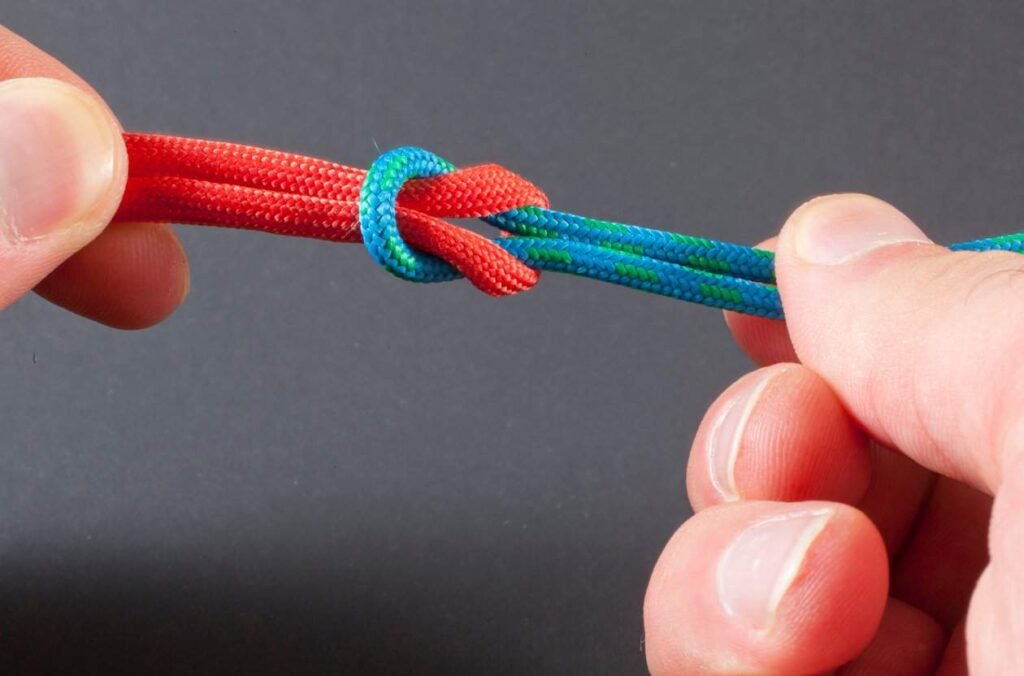
Source: iStock
Paracord, short for parachute cord, has enjoyed popularity throughout the years—all thanks to its durable and versatile nature.
However, as in the case of many in-demand products, it’s eventually going to be counterfeited.
Knowing the difference between genuine paracord types and fake cords is essential, regardless of whether you’re going to buy them for business or personal use.paracord manufacturer
In this article, we’ll walk you through some of the key indicators that can help you avoid fake paracord.
Core Construction and Composition
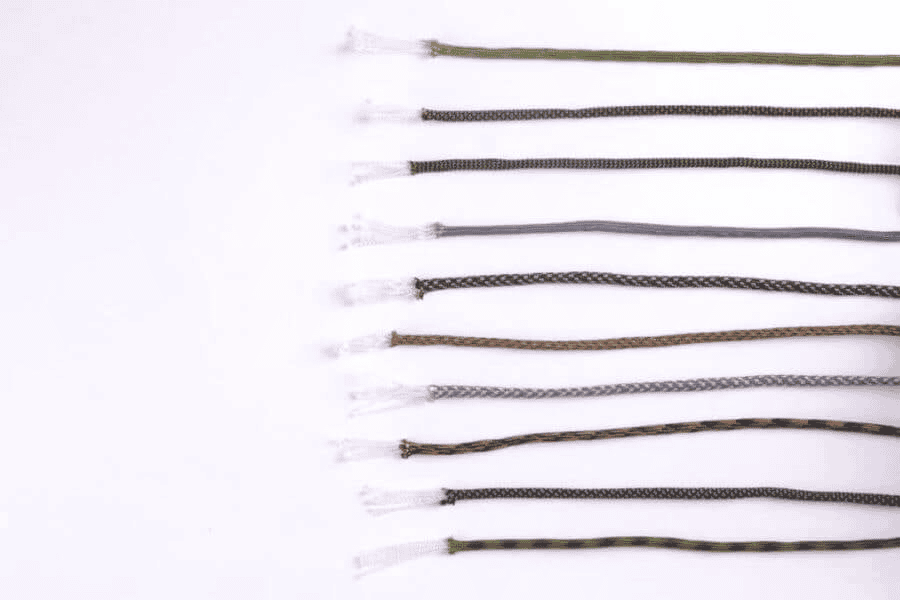
Source: iStock
One of the key features of kernmantle ropes like paracord is their core. If you cut out the cord’s outer sheath, you’ll find multiple strands.
Depending on the tensile strength grade, genuine paracord typically has 7 to 9 inner strands that are tightly woven together. This gives the cord its incredible strength and load-bearing capacity.
Fake or substandard cords may have less than their declared strand count. For instance, some brands of paracord may only have 2 to 3 strands inside instead of 7 strands. Shady brands or manufacturers may do this to decrease manufacturing costs and increase profits.
Below is an overview of the strand count and minimum breaking strength of each paracord type:
Type I
- 1 strand
- 95 pounds (43 kg) breaking strength
Type IA
- No core
- 100 pounds (45 kg) breaking strength
Type II
- 5 strands
- 275 pounds (125 kg) breaking strength
Type IIA
- No core
- 225 pounds (102 kg) breaking strength
Type III
- 7 strands
- 550 pounds (249 kg) breaking strength
Type IV
- 11 strands
- 750 pounds (340 kg) breaking strength
Paracord Size
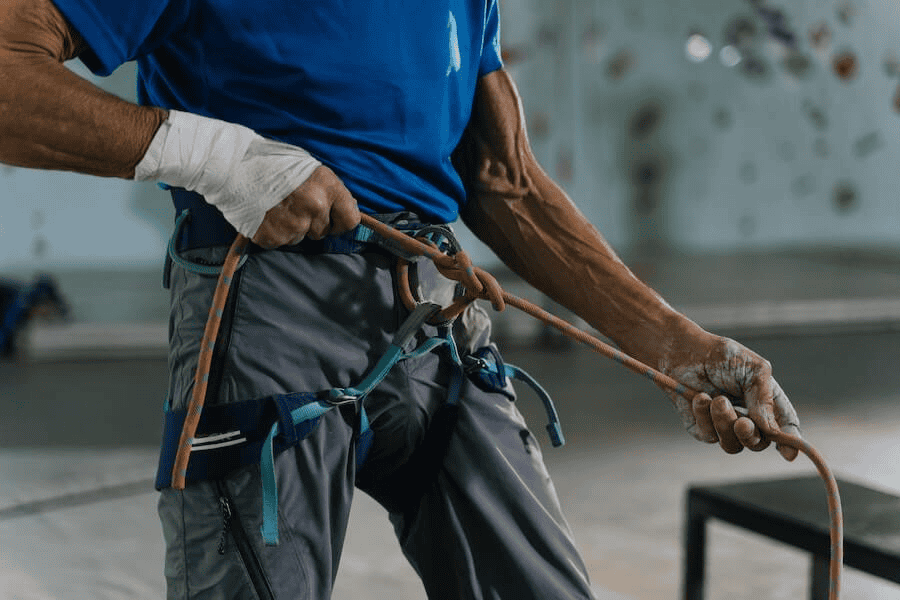
Source: Pexels
There’s no set standard length or diameter for fake paracord products. So, it’s not uncommon for them to be shorter or thinner (or somewhat thicker) than their genuine counterparts.
To give you a good idea, here are the approximate diameters of some common paracord types:
Type I
Type I paracord’s diameter ranges from 1.85 to 2.38 millimeters. If you need something thinner, you can use the nano cord (0.75 millimeters) or the micro cord (1.18 millimeters).
Type II
Type II paracord is 2.8 to 3.7 millimeters thick. It’s great for smaller tasks and crafting projects, such as making accessories (e.g., bracelets and necklaces).
Type III
Type III paracord, also called 550 paracord, is approximately 3 to 4 millimeters in diameter. This is the most popular paracord type for all kinds of applications and outdoor recreations, including camping, hiking, and fishing.
Type IV
Type IV paracord is 4.5 to 5 millimeters in diameter. Due to its thicker and stronger cord, it’s generally more suitable for heavy duty applications.
Mil Spec Paracord
Mil spec paracord is manufactured to military specifications. With a diameter of 5/32 inches (4 millimeters), it’s considered to be the strongest cord out there.
In conclusion, fake paracord might look like authentic paracord on the outside. However, its actual diameter might not match the specifications of an actual, genuine paracord.
Cord Weight
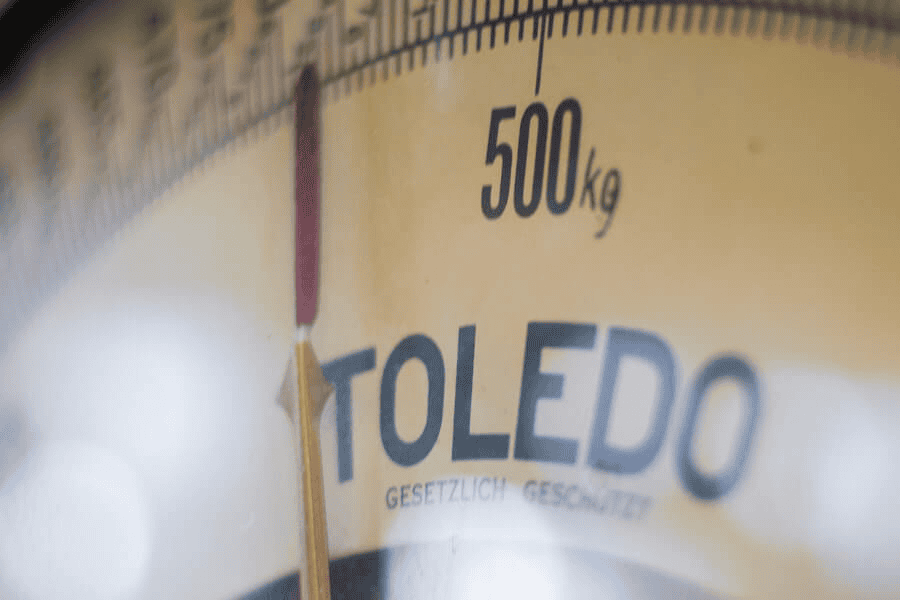
Source: Pexels
There are different factors that can affect the weight of commercial paracord, such as the manufacturer, construction technique, materials used, and finishing solutions applied to the cord.
Since fake paracord isn’t closely regulated like genuine paracord, you can expect it to be lighter than advertised, which could greatly affect its durability and strength.
To ensure your paracord stock has the right weight and measurement, always buy from a reputable brand and manufacturer. You can also ask for samples before placing large orders to verify the manufacturer’s specifications.
Here’s an overview of the approximate weight of common paracord types:
Type I
- 54 to 65 grams (1.9 to 2.3 ounces) per 30 meters (100 feet).
Type II
- 71 to 91 grams (2.5 to 3.2 ounces) per 30 meters (100 feet).
Type III
- 113 to 142 grams (4 to 5 ounces) per 30 meters (100 feet).
Type IV
- 156 to 184 grams (5.5 to 6.5 ounces) per 30 meters (100 feet).
Braided Rope Feel and Texture

Source: Pexels
The feel and texture of paracord can vary. It depends on several factors, such as its type (e.g., reflective paracord and camo paracord), source, weaving pattern, and any extra features.
Below are some of the general characteristics of genuine paracord to keep in mind:
- It should feel sturdy in your hands, without affecting its flexibility.
- Depending on the material and weaving pattern used, the outer sheath should feel smooth yet slightly bumpy to the touch. This allows for a secure and comfortable grip when handling the cord.
- The texture and feel of genuine paracord should be consistent throughout its length.
If the paracord you bought doesn’t match the descriptions above, you might want to verify its authenticity before selling or using it. Fake or substandard paracord feels smoother and softer than the real ones. It might also feel flimsy and plasticky when you rub it between your fingers.
Color Consistency and Quality
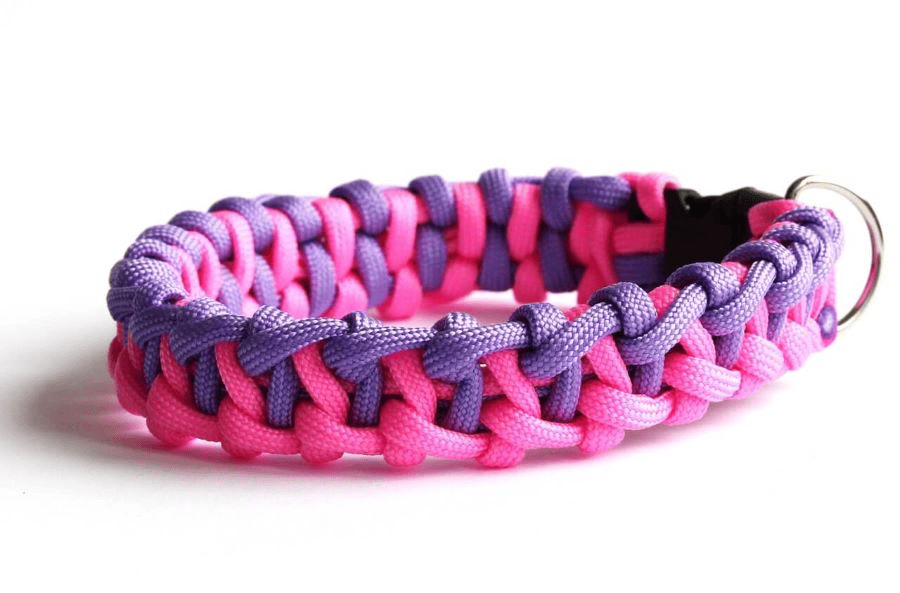
Source: Pixabay
The colors of real paracord come in a wide range of options, from pastel colors to earthy tones to neon colors. The truth is there’s no single foolproof way of separating real paracord from fakes based on color alone.
If you want to know more about the dyes used in a specific paracord brand, consider getting in touch with the manufacturer to ask for more detailed information.
You might be wondering right now: Does the color of paracord fade easily?
The ability of paracord to resist fading will depend on different factors, such as the cord material, intended use, and dye type and quality. In general, paracord products that use high-quality dye and have been properly dyed will resist fading for a significant amount of time (under ideal conditions).
If you want to minimize fading, make sure to store your paracord stock in a cool, dry place, away from prolonged exposure to harsh weather elements. Some manufacturers offer paracord products that have special coatings and materials that are resistant to mildew, mold, rot, and UV radiation.
When it comes to color bleeding, lower-quality paracord has a higher tendency to bleed color. This usually happens when a manufacturer’s dyeing technique fails to bond the dye to the nylon fibers or when the dye they use isn’t colorfast.
Colorfastness testing tip:
- Wet a small portion of the paracord, and then gently rub it against any white cloth.
- If the cord loses its color and transfers to the cloth, it’s a good indication the paracord might bleed under wet or humid conditions. It might also be a sign that it’s substandard or not genuine.
Identification Labels or Markings
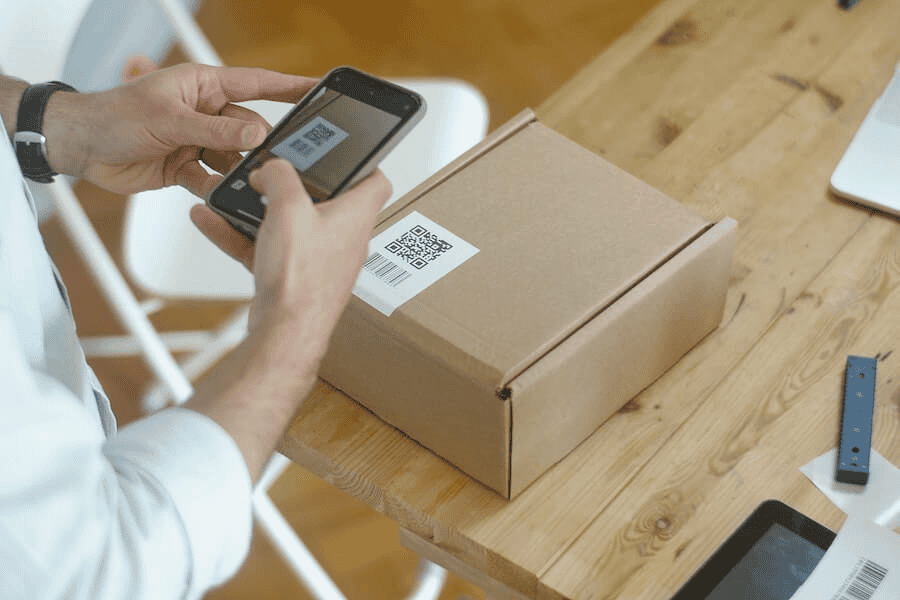
Source: Pexels
Genuine or high-quality paracord usually includes labels or markings. Low-quality or counterfeit paracord is less likely to have them. If they do, the labels are usually poorly printed and/or misaligned.
The labels or markings on paracord products can be different for every manufacturer. However, they usually include the following types of information:
- Paracord type (Type I, Type II, Type III, etc.)
- Batch number or production date
- Brand logo or manufacturer’s name
- Breaking strength
- Care and safety instructions
- Certifications or standards that the product meets
- Color (This information can be helpful when you’re reordering the same paracord color.)
- Country of origin
- Intended use (e.g., camping, crafting, and tactical use)
- Materials used
- QR codes or barcodes for inventory tracking and management
Unique Identification Marking
Specialized paracord types may have features that are unique to them. For instance, true mil-spec cords include an inner strand that’s referred to as an “ID Marker Strand,” “Manufacturer’s ID Strand,” or “Colored ID Marker Strand.”
The United States military assigns this colored strand to every manufacturer to indicate that the cord meets or exceeds the MIL-C-5040h and the newer PIA-C-5040 specifications.
Paracord Manufacturer or Brand Reputation
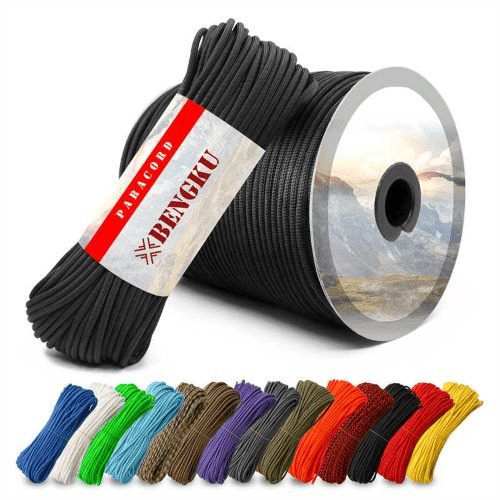
Source: Baiyuheng Outdoors
An established brand or manufacturer that specializes in outdoor and survival gear is more likely to offer genuine paracord products. However, it’s still important to know everything about the company you’re buying from by contacting them directly, reading their customers’ feedback (both good and bad) and expert reviews, and checking their social media accounts.
Where Can You Buy Quality Paracord?
One company that has been the go-to choice by individuals and retailers all over the world is Baiyuheng Outdoors, a China-based manufacturer of all kinds of outdoor gear and survival equipment.
Baiyuheng Outdoors has been offering its services since 2010. Some of the products they offer include ferro rods, paracord, ropes, survival cards, packs and bags, covers and shelters, and many more.
Best Paracord Product
One of their best-selling paracord products is the “Bengku 550 Paracord.” Like the name suggests, it’s a 7-strand Type III paracord that has a breaking strength of 550 pounds.
Why Baiyuheng Outdoors?
There are plenty of reasons why it’s a great manufacturer, such as:
- Great customer service
- Customization options
- Fast, door-to-door delivery service
- Free product samples and photos
- Low minimum order quantity (MOQ)
- Certified manufacturing processes and supplies
Conclusion
Being able to tell real and fake paracord apart is crucial, especially if you’re thinking of selling it. Pay attention to the cord’s certifications, core composition, color consistency, size, texture, weight, and identification markings, as well as the price, source, and reviews.
While this isn’t a foolproof way, it minimizes the risk and helps you make a more informed decision.
In addition, buy from reputable manufacturers that specialize in paracord design and production. There are plenty of options out there, such as Baiyuheng Outdoors.
Make sure to do your research to ensure you’re investing your money in a company that has a history of delivering high-quality and authentic products.

